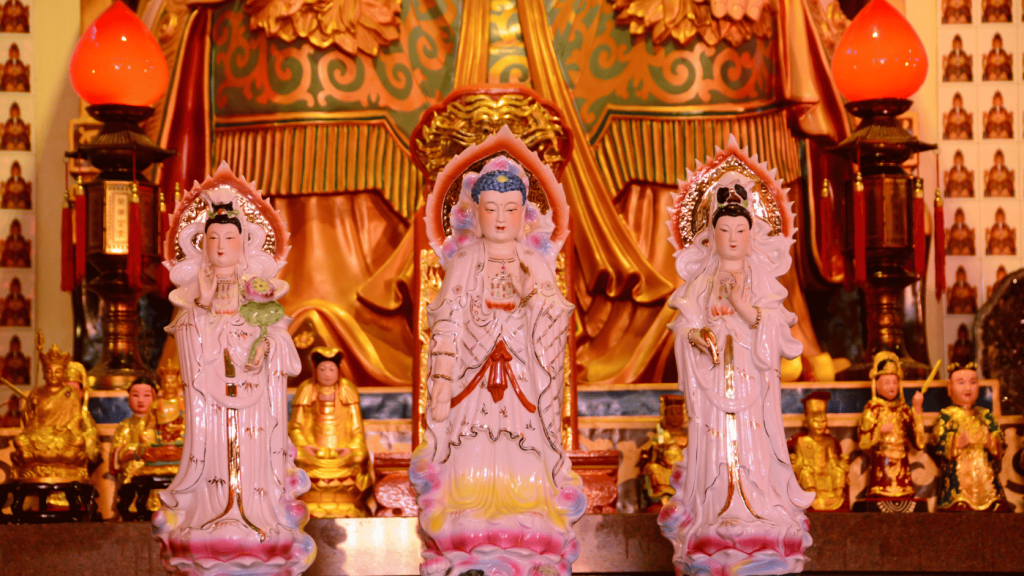Kuala Lumpur, the vibrant capital of Malaysia, is known for its blend of modern and traditional architecture, diverse cultures, and iconic landmarks. Among its most famous attractions is the magnificent Thean Hou Temple. Nestled on a hilltop overlooking the city’s skyline, this spectacular temple is a gem of Chinese architecture and a must-visit for anyone interested in exploring the city’s colorful cultural heritage.
A Brief History of Thean Hou Temple

Before embarking on your journey through the temple grounds, it’s important to understand the historical significance of this religious icon. Thean Hou Temple has a rich and fascinating history that dates back to the 19th century and represents a fusion of several Chinese architectural styles.
Origins and Founding
The temple was established in 1894 by the Hainanese community, one of the Chinese minority groups in Malaysia. It was originally a small wooden shrine dedicated to the sea goddess Mazu, also known as Thean Hou or Tianhou, which means “Queen of Heaven.” Over time, the temple was expanded and renovated several times, and it finally took its current form in 1987.
Architectural Influences
Thean Hou Temple‘s architectural style is a unique blend of three Chinese schools – Hokkien, Cantonese, and Teochew – that reflect the diverse heritage of the Chinese community in Malaysia. The temple’s roof, a striking feature, is adorned with intricate carvings and brightly colored porcelain tiles in a style that originated in Fuzhou, Fujian Province. The temple’s pillars and walls are made of imported and local marble and granite, while the interior is adorned with intricate wood carvings, murals, and statues that depict various deities and myths.
The Temple’s Significance in Chinese Culture

Thean Hou Temple is not only a prominent religious site but also a symbol of Chinese culture and identity in Malaysia. It is a place for Chinese Malaysians to celebrate their heritage, connect with their roots, and preserve their traditions. The temple organizes several cultural events and festivals throughout the year, attracting hundreds of thousands of visitors from around the world.
Navigating the Temple Grounds
Before entering the temple, visitors are welcomed by a beautifully landscaped garden with fountains, ponds, and stone sculptures. The main entrance leads to a grand staircase that takes you to the temple’s central courtyard, where you can start your exploration of the various halls and shrines.
The Six-Tiered Pagoda
The most striking feature of the temple is the six-tiered pagoda, which is located at the center of the courtyard and rises about four stories high. The pagoda is an architectural masterpiece, with intricate carvings and murals that depict the life of Buddha and various deities. Visitors can climb up the pagoda to enjoy a panoramic view of the city skyline.
The Prayer Halls
The temple has several halls dedicated to various deities, such as Mazu, Guan Yin, and Shui Wei Sheng Niang. These halls are decorated with elaborate frescoes, calligraphy, and statues that symbolize different aspects of Chinese mythology and spiritual beliefs. Visitors can offer incense and pray for blessings and protection.
The Courtyard and Gardens
Aside from the main pagoda and halls, Thean Hou Temple also features several pavilions, gardens, and courtyards where visitors can relax and meditate. The gardens are landscaped with traditional Chinese elements, such as rock formations, bridges, and water features. The temple is particularly beautiful during the spring season when the cherry blossoms and other flowers are in full bloom.
The Wishing Well and Fortune Telling Stalls
If you’re feeling lucky or curious about your future, you can visit the fortune-telling stalls near the temple’s entrance or throw a coin into the wishing well. These are popular activities among visitors, especially during the festive seasons.
Thean Hou Temple’s Vibrant Festivals and Celebrations

Thean Hou Temple is not only a place of worship but also a hub of cultural festivities and celebrations that draw large crowds of locals and tourists. Some of the most prominent events include:
Chinese New Year
Also known as Spring Festival, Chinese New Year is celebrated on the first day of the lunar calendar and lasts for fifteen days. The temple is decorated with red lanterns, banners, and flowers, and visitors can witness dragon and lion dances, martial arts performances, and fireworks displays. There are also various traditional food and handicrafts stalls.
Mid-Autumn Festival
The Mid-Autumn Festival, also known as Mooncake Festival, is held on the 15th day of the eighth lunar month. It is a time for family reunions and appreciating the beauty of the full moon. The temple usually hosts lantern-making workshops, mooncake tasting sessions, and cultural performances.
Wesak Day
Wesak Day commemorates the birth, enlightenment, and death of Buddha and is celebrated on the full moon day of the fourth lunar month. The temple holds religious ceremonies, chanting sessions, and flower offerings. Visitors can also participate in charity activities and vegetarian food offerings.
Other Cultural Events
The temple hosts other cultural events throughout the year, such as the Nine Emperor Gods Festival, Qingming Festival, and Lantern Festival. These are opportunities for visitors to learn more about Chinese culture, art, music, and cuisine.
Practical Information for Visitors
Before planning your visit to Thean Hou Temple, it’s helpful to know some useful tips and information:
Getting to Thean Hou Temple
The temple is situated in Robson Heights, about five kilometers from Kuala Lumpur’s city center. You can take a taxi or grab car to the temple or use the Klang Valley Integrated Transit System (KIVTS), which connects the temple to the city’s main train and bus stations.
Temple Etiquette and Dress Code
Visitors are expected to adhere to the temple’s dress code, which requires modest and respectful clothing. Shoes must be removed before entering the prayer halls and pagoda. Visitors should also avoid making loud noises, taking flash photography, or touching the statues and religious artifacts.
Nearby Attractions and Amenities
Thean Hou Temple is located near several other popular attractions, including the National Museum, the Islamic Arts Museum, and the Batu Caves. There are also various restaurants, cafes, and souvenir shops nearby that cater to visitors’ needs.
In conclusion, a visit to Thean Hou Temple is a journey through time and space. It is a place where spirituality, art, and culture converge in a harmonious blend, providing a glimpse into the rich and diverse heritage of Malaysia’s Chinese community. Whether you’re a history buff, a culture enthusiast, or a spiritual seeker, this temple is a destination that should not be missed.

